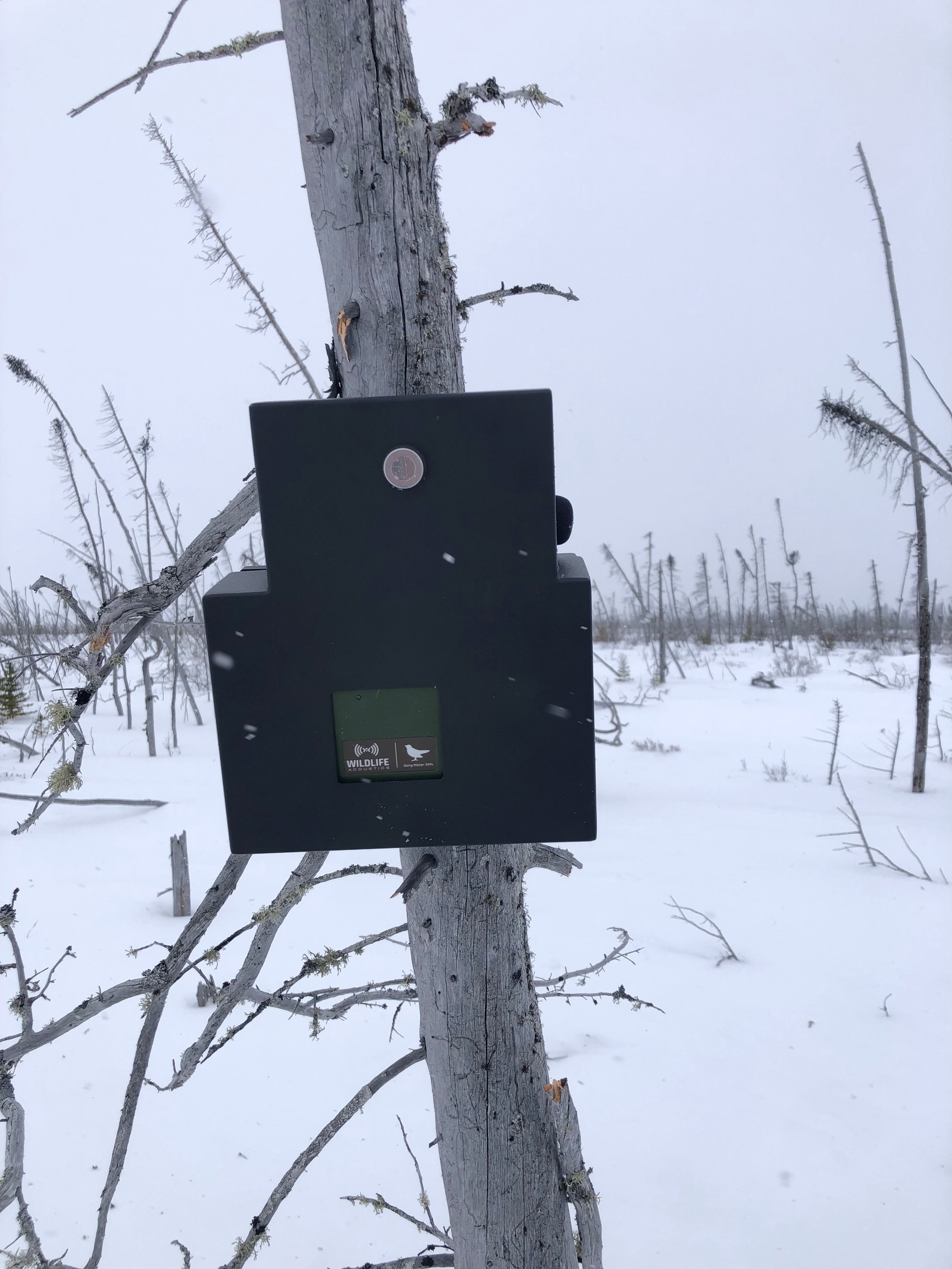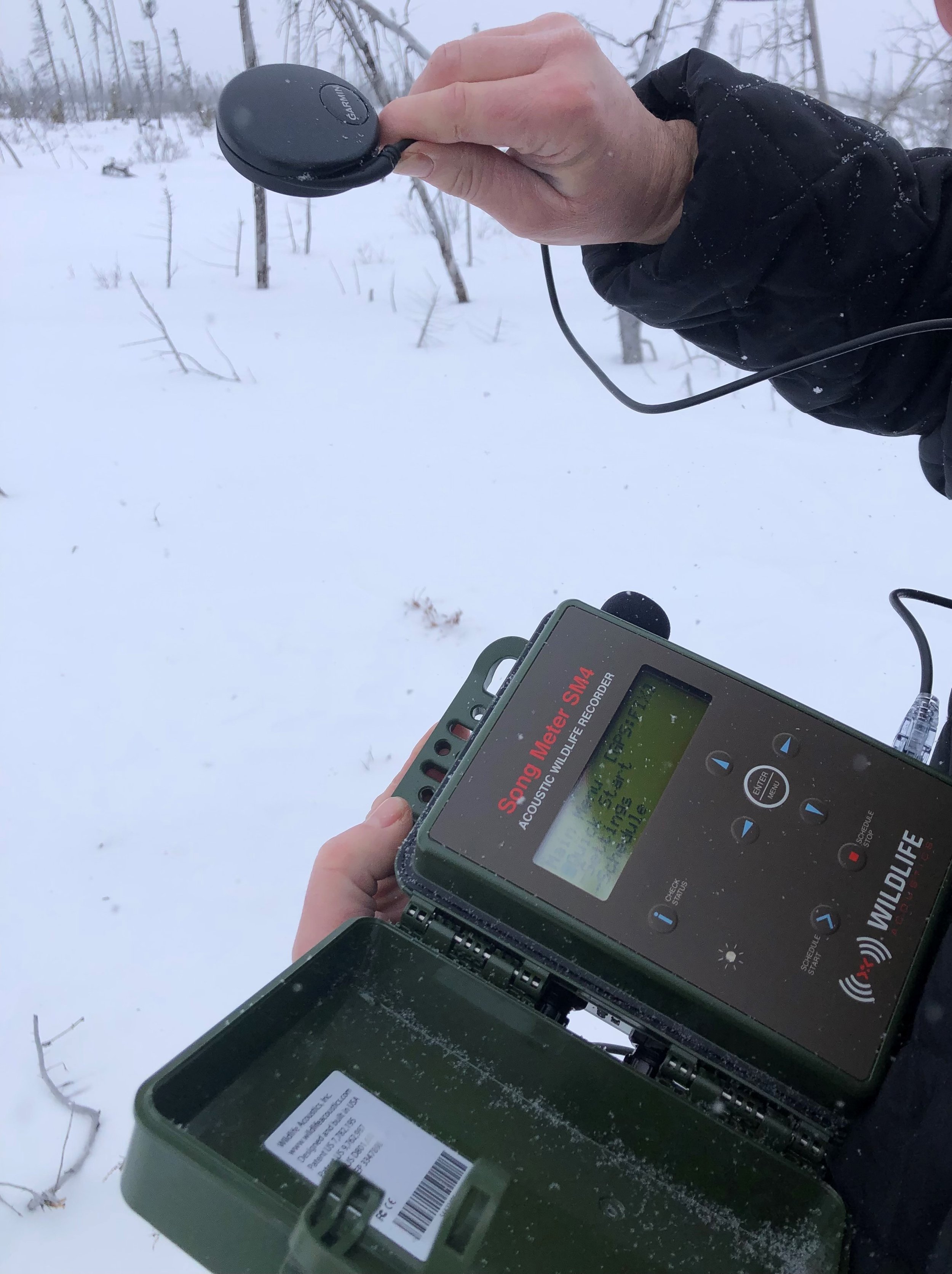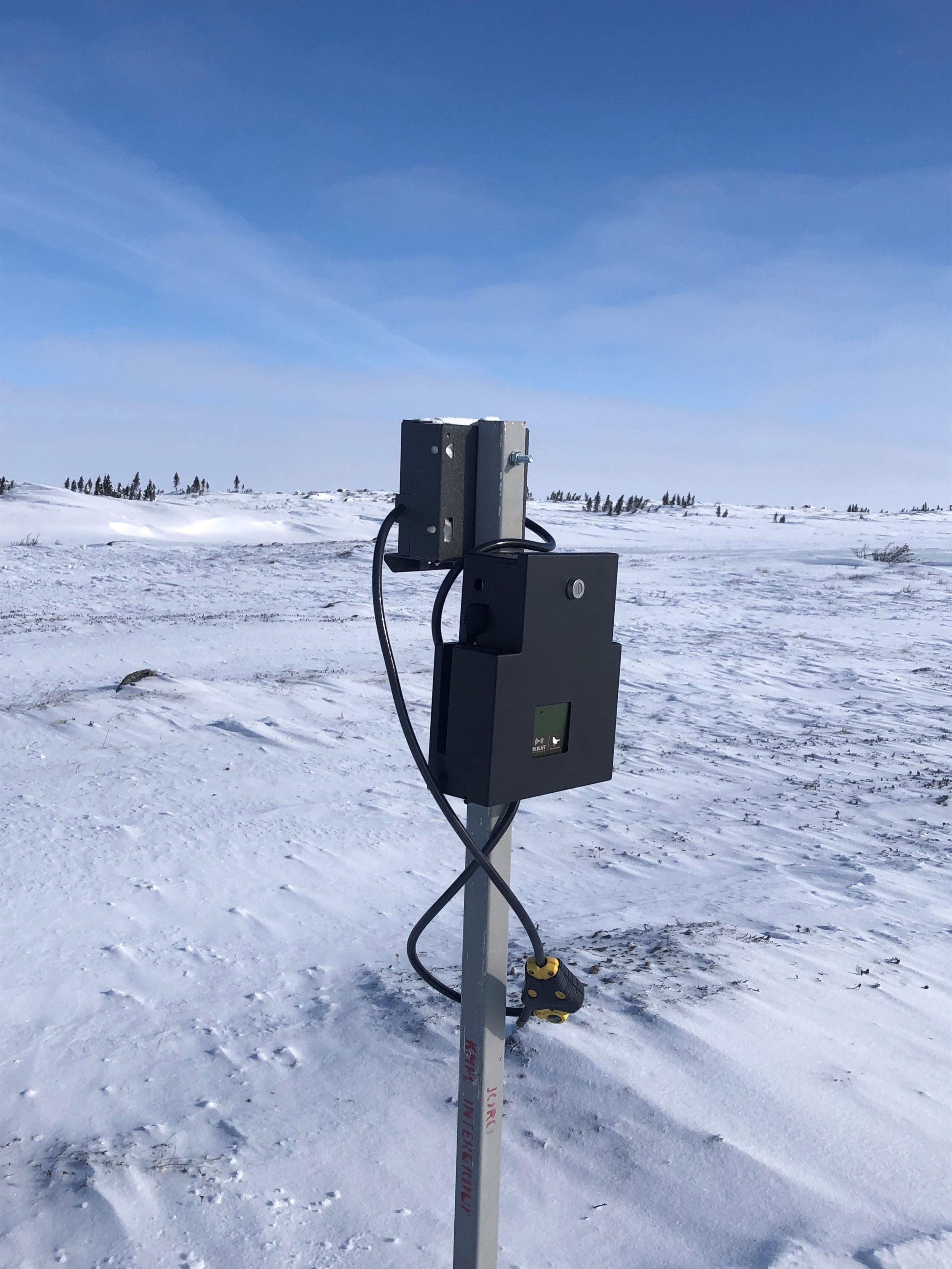Bird Acoustic Recorders
Acoustic monitoring is an efficient, cost-effective way to sample large areas with numerous and diverse habitats thus providing permanent records of animal and man-made vocalizations or sounds. To accomplish this, Autonomous Recording Units (ARU) are used to remotely monitor entire soundscapes at once over extended periods of time, overcoming human limitations of manual data collection.
The ARU used by Joro (Wildlife Acoustics Song Meter SM4™) is specially engineered to deliver quality sound recordings of birds, mammals, and other sources of sound in the wild. The SM4 features two built-in microphones that create higher quality recordings (MP3 format) that are digitally stored within the ARU for eventual recovery and analysis. Once retrieved, Joro staff uses WildTrax™ software to assess and evaluate each recording and then code all birds, mammals and other sounds that were present. As such, ARUs give Joro a flexible tool for conducting species inventory, presence/absence surveys, endangered species detection and habitat health monitoring.
Bat Acoustic Recorders
Bat acoustic recorders are valuable tools in environmental assessments and are used for species identification as bats use echolocation for navigation and hunting, emitting high-frequency sounds that bounce off objects and prey. Different bat species have distinct echolocation calls. Acoustic recorders can capture these calls, enabling researchers to identify which bat species are present in a particular area without needing to visually observe them. Acoustic recorders can provide information about the activity levels of bats in each area over time. By recording bat calls at regular intervals, researchers can determine patterns of activity, such as seasonal variations, nightly foraging behaviors, and habitat preferences.
Overall, bat acoustic recorders play a crucial role in environmental assessments by providing valuable base line data, particularly on migratory bats. Data on bat species presence, activity patterns, habitat quality, population trends, and the potential impacts of human activities on bat populations can be assessed.



